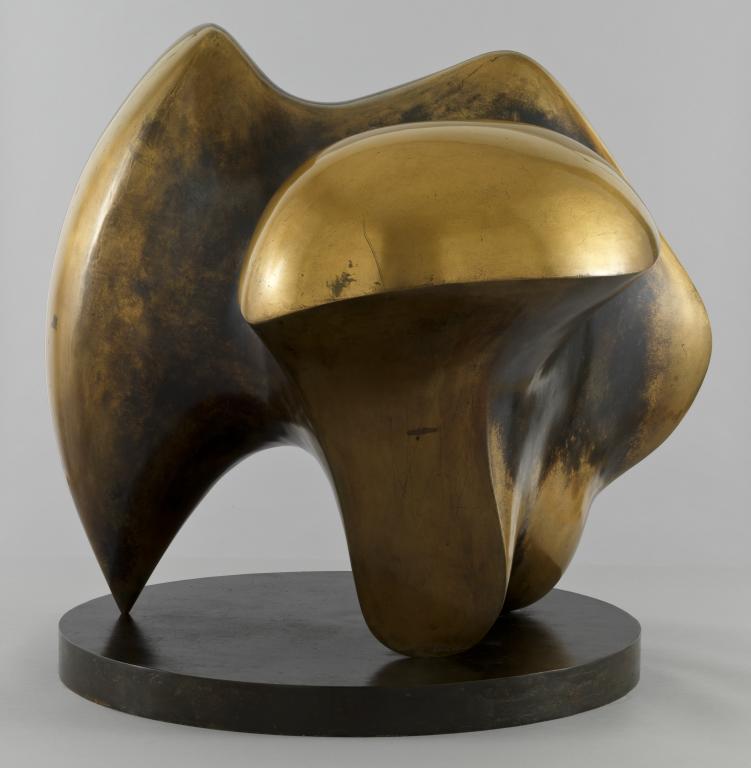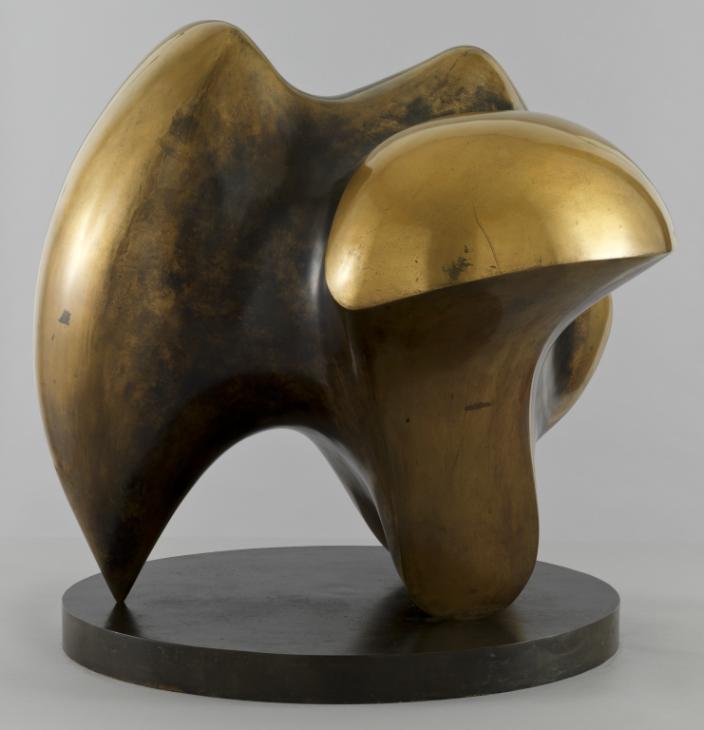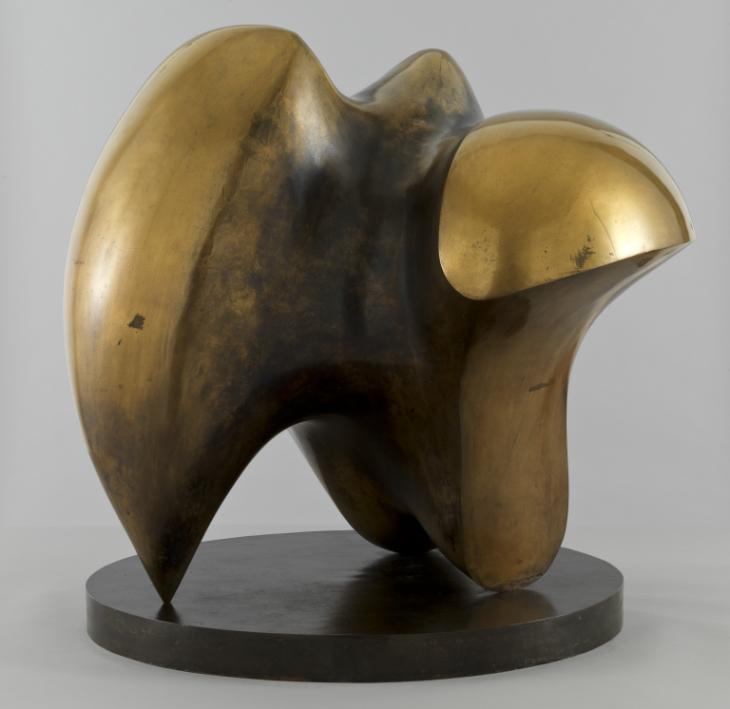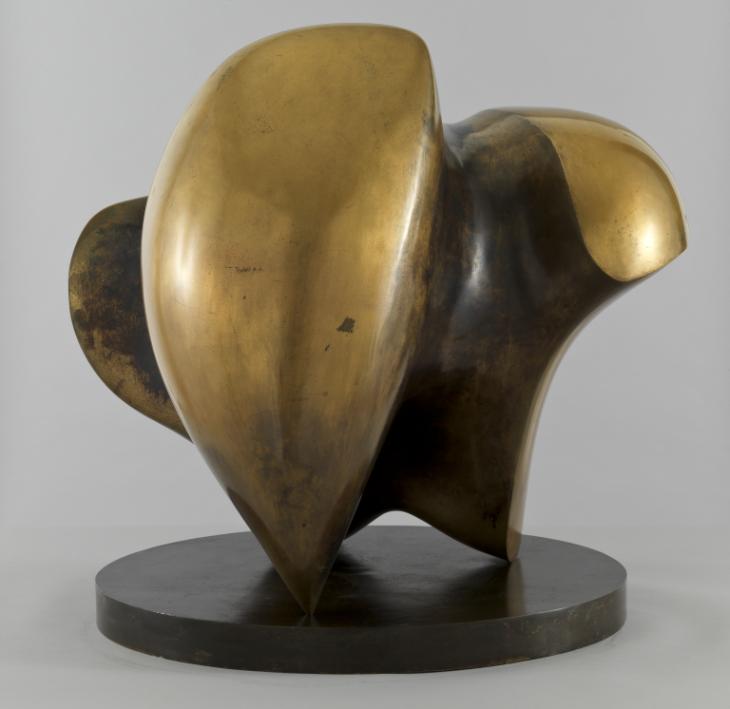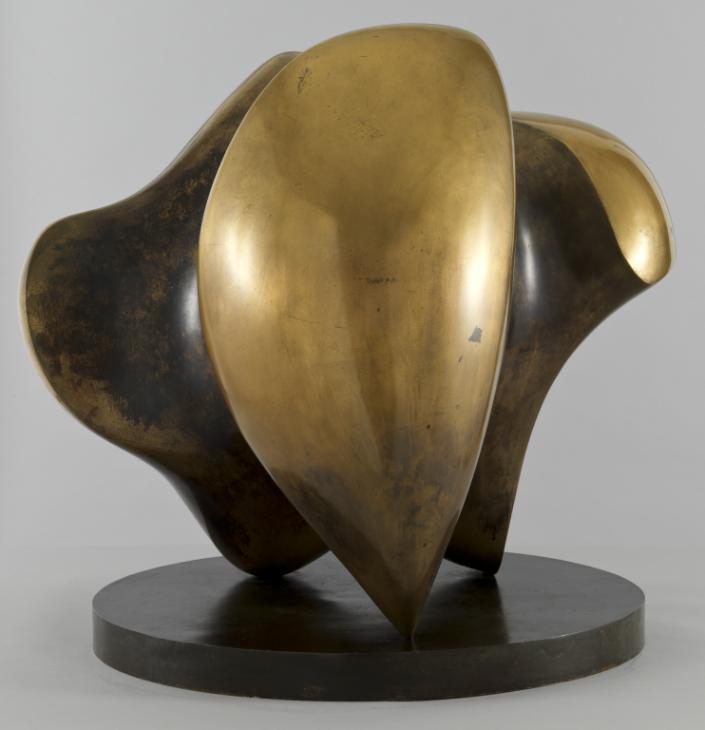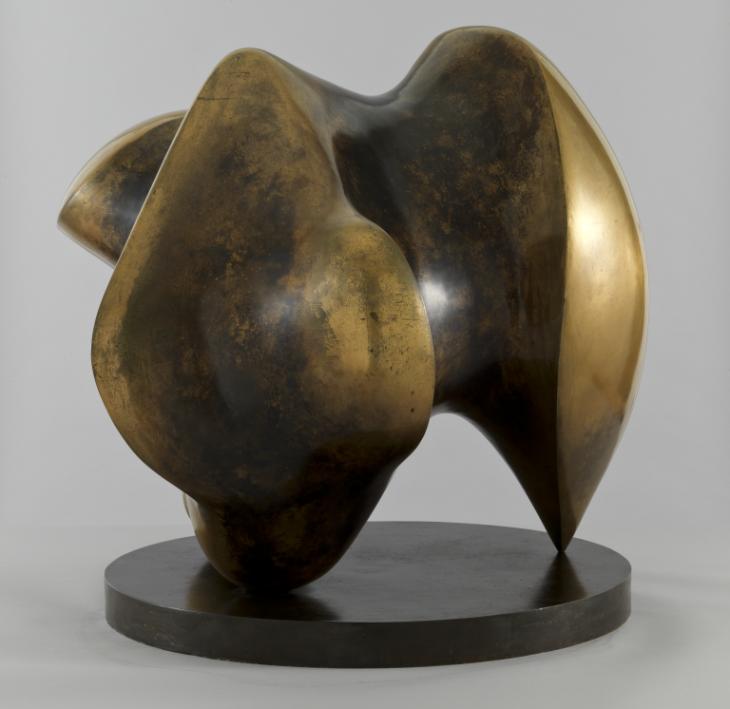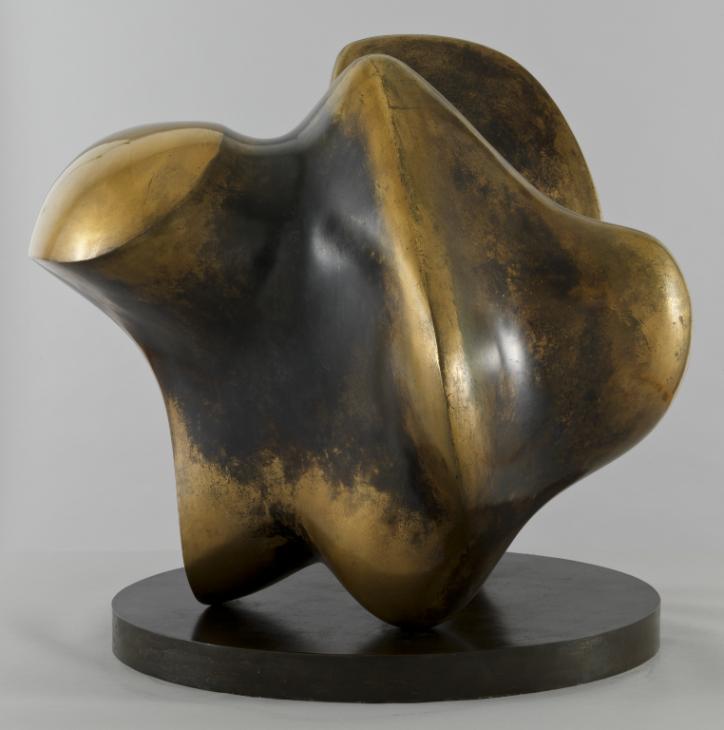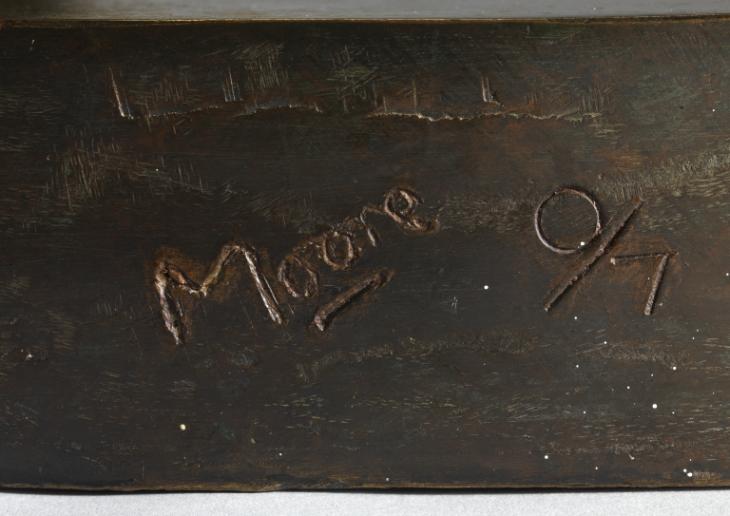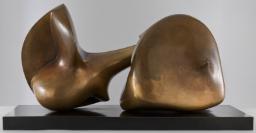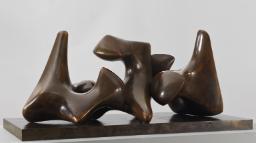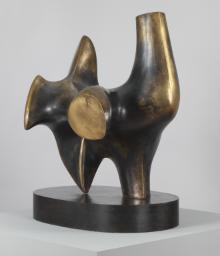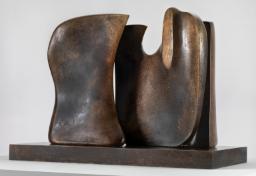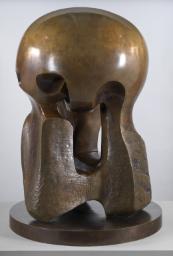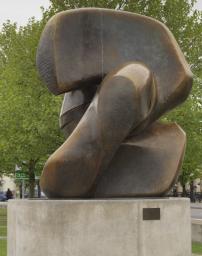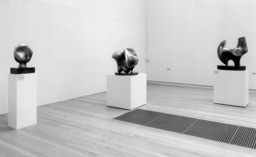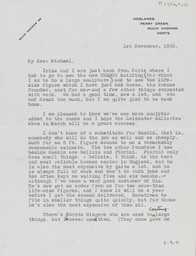Henry Moore OM, CH Working Model for Three Way Piece No.1: Points 1964, cast c.1964-9
Image 1 of 12
-
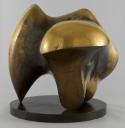 Henry Moore OM, CH, Working Model for Three Way Piece No.1: Points 1964, cast c.1964-9© The Henry Moore Foundation. All Rights Reserved© The Henry Moore Foundation. All Rights Reserved
Henry Moore OM, CH, Working Model for Three Way Piece No.1: Points 1964, cast c.1964-9© The Henry Moore Foundation. All Rights Reserved© The Henry Moore Foundation. All Rights Reserved -
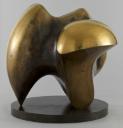 Henry Moore OM, CH, Working Model for Three Way Piece No.1: Points 1964, cast c.1964-9© The Henry Moore Foundation. All Rights Reserved© The Henry Moore Foundation. All Rights Reserved
Henry Moore OM, CH, Working Model for Three Way Piece No.1: Points 1964, cast c.1964-9© The Henry Moore Foundation. All Rights Reserved© The Henry Moore Foundation. All Rights Reserved -
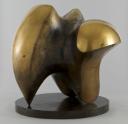 Henry Moore OM, CH, Working Model for Three Way Piece No.1: Points 1964, cast c.1964-9© The Henry Moore Foundation. All Rights Reserved© The Henry Moore Foundation. All Rights Reserved
Henry Moore OM, CH, Working Model for Three Way Piece No.1: Points 1964, cast c.1964-9© The Henry Moore Foundation. All Rights Reserved© The Henry Moore Foundation. All Rights Reserved -
 Henry Moore OM, CH, Working Model for Three Way Piece No.1: Points 1964, cast c.1964-9© The Henry Moore Foundation. All Rights Reserved© The Henry Moore Foundation. All Rights Reserved
Henry Moore OM, CH, Working Model for Three Way Piece No.1: Points 1964, cast c.1964-9© The Henry Moore Foundation. All Rights Reserved© The Henry Moore Foundation. All Rights Reserved -
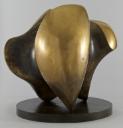 Henry Moore OM, CH, Working Model for Three Way Piece No.1: Points 1964, cast c.1964-9© The Henry Moore Foundation. All Rights Reserved© The Henry Moore Foundation. All Rights Reserved
Henry Moore OM, CH, Working Model for Three Way Piece No.1: Points 1964, cast c.1964-9© The Henry Moore Foundation. All Rights Reserved© The Henry Moore Foundation. All Rights Reserved -
 Henry Moore OM, CH, Working Model for Three Way Piece No.1: Points 1964, cast c.1964-9© The Henry Moore Foundation. All Rights Reserved© The Henry Moore Foundation. All Rights Reserved
Henry Moore OM, CH, Working Model for Three Way Piece No.1: Points 1964, cast c.1964-9© The Henry Moore Foundation. All Rights Reserved© The Henry Moore Foundation. All Rights Reserved -
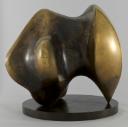 Henry Moore OM, CH, Working Model for Three Way Piece No.1: Points 1964, cast c.1964-9© The Henry Moore Foundation. All Rights Reserved© The Henry Moore Foundation. All Rights Reserved
Henry Moore OM, CH, Working Model for Three Way Piece No.1: Points 1964, cast c.1964-9© The Henry Moore Foundation. All Rights Reserved© The Henry Moore Foundation. All Rights Reserved -
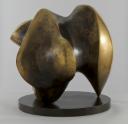 Henry Moore OM, CH, Working Model for Three Way Piece No.1: Points 1964, cast c.1964-9© The Henry Moore Foundation. All Rights Reserved© The Henry Moore Foundation. All Rights Reserved
Henry Moore OM, CH, Working Model for Three Way Piece No.1: Points 1964, cast c.1964-9© The Henry Moore Foundation. All Rights Reserved© The Henry Moore Foundation. All Rights Reserved -
 Henry Moore OM, CH, Working Model for Three Way Piece No.1: Points 1964, cast c.1964-9© The Henry Moore Foundation. All Rights Reserved© The Henry Moore Foundation. All Rights Reserved
Henry Moore OM, CH, Working Model for Three Way Piece No.1: Points 1964, cast c.1964-9© The Henry Moore Foundation. All Rights Reserved© The Henry Moore Foundation. All Rights Reserved -
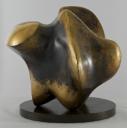 Henry Moore OM, CH, Working Model for Three Way Piece No.1: Points 1964, cast c.1964-9© The Henry Moore Foundation. All Rights Reserved© The Henry Moore Foundation. All Rights Reserved
Henry Moore OM, CH, Working Model for Three Way Piece No.1: Points 1964, cast c.1964-9© The Henry Moore Foundation. All Rights Reserved© The Henry Moore Foundation. All Rights Reserved -
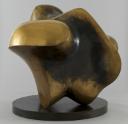 Henry Moore OM, CH, Working Model for Three Way Piece No.1: Points 1964, cast c.1964-9© The Henry Moore Foundation. All Rights Reserved© The Henry Moore Foundation. All Rights Reserved
Henry Moore OM, CH, Working Model for Three Way Piece No.1: Points 1964, cast c.1964-9© The Henry Moore Foundation. All Rights Reserved© The Henry Moore Foundation. All Rights Reserved -
 Henry Moore OM, CH, Working Model for Three Way Piece No.1: Points 1964, cast c.1964-9© The Henry Moore Foundation. All Rights Reserved© The Henry Moore Foundation. All Rights Reserved
Henry Moore OM, CH, Working Model for Three Way Piece No.1: Points 1964, cast c.1964-9© The Henry Moore Foundation. All Rights Reserved© The Henry Moore Foundation. All Rights Reserved
© The Henry Moore Foundation. All Rights Reserved
Henry Moore OM, CH,
Working Model for Three Way Piece No.1: Points
1964, cast c.1964-9
© The Henry Moore Foundation. All Rights Reserved
Closely related to Working Model for Three Way Piece No.2: Archer, also made in 1964, this sculpture combines soft, rounded forms with sharp lines and points that are arranged in a way that encourages it to be seen in the round. The smooth, polished surfaces of this work echo the shapes of the marble sculptures that Moore was carving concurrently.
Henry Moore OM, CH 1898–1986
Working Model for Three Way Piece No.1: Points
1964, cast c.1964–9
Bronze
652 x 712 x 743 mm
Inscribed ‘Moore’ and ‘0/7’ on side of base
Artist’s copy aside from edition of 7
Presented by the artist 1978
T02298
Working Model for Three Way Piece No.1: Points
1964, cast c.1964–9
Bronze
652 x 712 x 743 mm
Inscribed ‘Moore’ and ‘0/7’ on side of base
Artist’s copy aside from edition of 7
Presented by the artist 1978
T02298
Ownership history
Presented by the artist to Tate in 1978 as part of the Henry Moore Gift.
Exhibition history
1969
Henry Moore, Heslington Hall, York, March 1969, no.36.
1969
Henry Moore: Drawings and Sculpture, Gordon Maynard Gallery, Welwyn Garden City, July 1969, no.7.
1971
Henry Moore, Musée Rodin, Paris, 1971, no.47.
1971
Henry Moore: Sculpture, Drawings, Graphics, Turnpike Gallery, Leigh, November–December 1971, no.16.
1972
Mostra di Henry Moore, Forte di Belvedere, Florence, May–September 1972, no.132.
1975
Henry Moore: Fem Decennier, Skulptur, Teckning, Grafik 1923–1975, British Council touring exhibition: Henie-Onstad Kunstsenter, Oslo, June–July 1975; Kulturhuset, Stockholm, August–October 1975; Nordjyllands Kunstmuseum, Aalborg, October–November 1975, no.71.
1976
The Work of the British Sculptor Henry Moore, Zürcher Forum, Zürich, June–August 1976, no.79.
1978
Henry Moore: 80th Birthday Exhibition, Cartwright Hall, Bradford, April–June 1978, no.38.
1978
The Henry Moore Gift, Tate Gallery, London, June–August 1978, no number.
2008
Henry Moore and the Challenge of Architecture, Didrichsen Art Museum, Helsinki, February–September 2008.
References
1965
Henry Moore, exhibition catalogue, Marlborough Fine Art, London 1965, reproduced (three views).
1967
Albert Elsen, ‘The New Freedom of Henry Moore’, Art International, vol.11, no.7, September 1967, pp.42–5 (?another cast reproduced p.45).
1968
John Russell, Henry Moore, London 1968, pp.204–09, reproduced pls.215–16.
1968
John Hedgecoe (ed.), Henry Moore, London 1968, p.501 (?another cast reproduced pp.500–1).
1977
Alan Bowness (ed.), Henry Moore. Volume 4: Complete Sculpture 1964–73, London 1977, no.532 (?another cast reproduced pls.24–5).
1978
The Henry Moore Gift, exhibition catalogue, Tate Gallery, London 1978, reproduced p.56.
1979
Alan G. Wilkinson, The Moore Collection in the Art Gallery of Ontario, Toronto.
1979
1979, pp.192–3 (original plaster reproduced pl.152).
1981
The Tate Gallery 1978–80: Illustrated Catalogue of Acquisitions, London 1981, p.138, reproduced p.138.
Technique and condition
This bronze sculpture stands on a circular bronze base at three points. It was cast using a mould taken from a plaster model, which would have been sculpted by applying wet plaster over a wooden armature (fig.1). The bronze was probably fabricated using the sand casting technique, although this is difficult to confirm as the cast surface has been sanded and polished with rotary finishing tools, giving the sculpture an overall satin finish that carries no definitive evidence of the casting process.
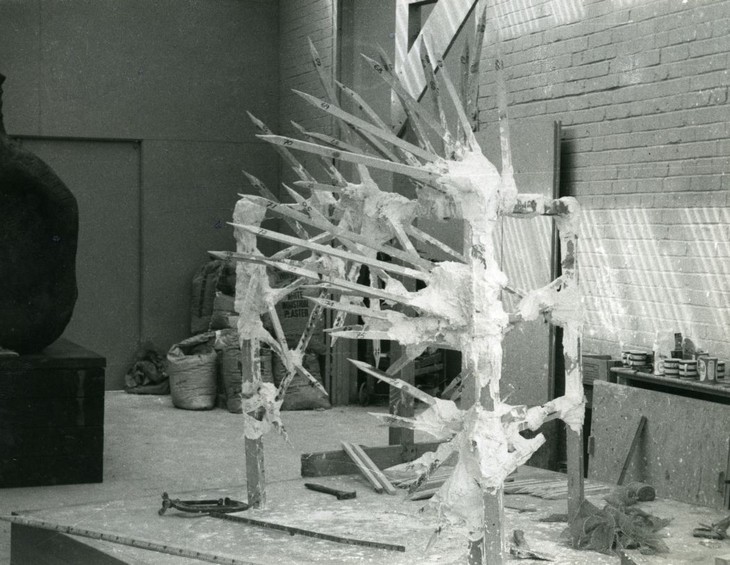
Wooden armature of Working Model for Three Way Piece No.1: Points in Moore's studio 1964
© The Henry Moore Foundation. All Rights Reserved
Fig.1
Wooden armature of Working Model for Three Way Piece No.1: Points in Moore's studio 1964
© The Henry Moore Foundation. All Rights Reserved
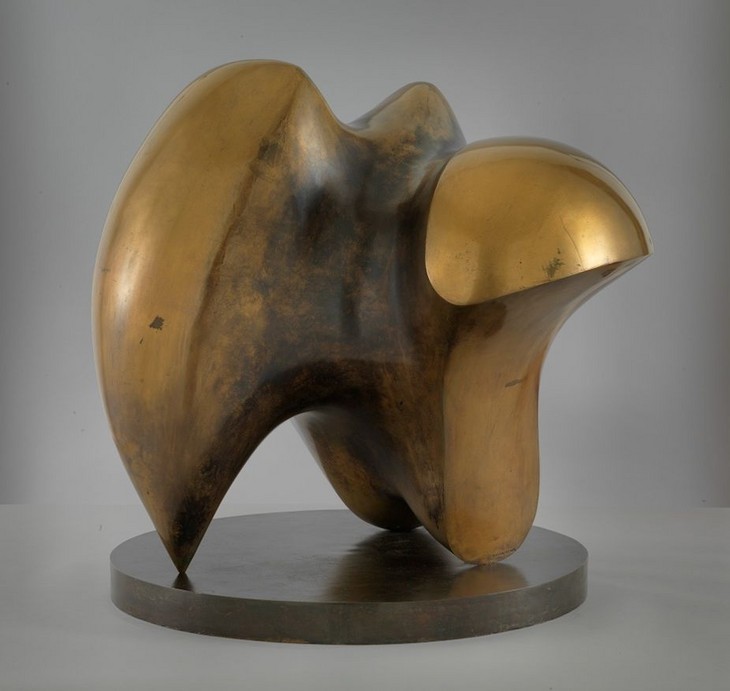
Henry Moore
Working Model for Three Way Piece No.1: Points 1964, cast 1964–9
Tate T02298
© The Henry Moore Foundation. All Rights Reserved
Fig.2
Henry Moore
Working Model for Three Way Piece No.1: Points 1964, cast 1964–9
Tate T02298
© The Henry Moore Foundation. All Rights Reserved
After the sculpture had been cast and treated a dark brown artificial patina was applied to certain areas of the bronze surface (fig.2). The chemical solution used to create the patina was probably potassium polysulphide (known in foundries as ‘liver of sulphur’). It was stippled onto the recessed surfaces of the form with a brush, giving these areas a mottled appearance. The bronze was probably heated with a blowtorch as the patina was applied, which served to darken the eventual colour. A similar colour was used on the base but this was applied more evenly. The sculpture has been finished with a coat of lacquer that displays a slightly yellow tint, giving an almost golden colour to the polished bronze.
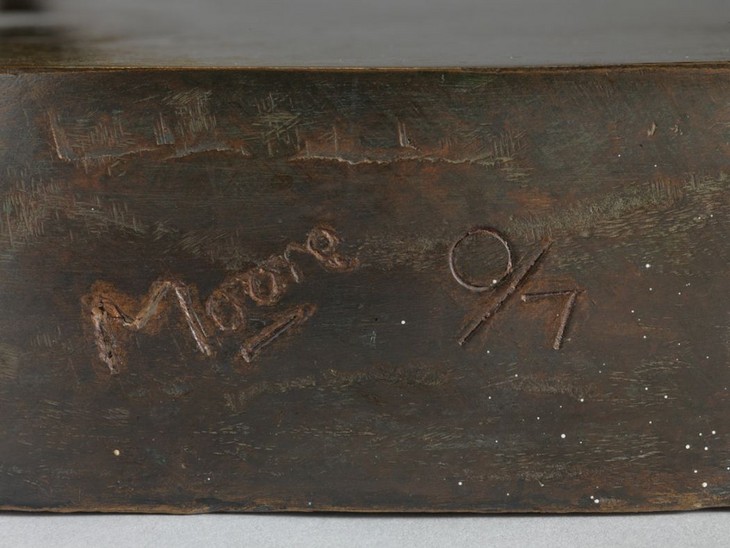
Detail of artist's signature and edition number on base of Working Model for Three Way Piece No.1: Point 1964, cast 1964–9
Tate T02298
© The Henry Moore Foundation. All Rights Reserved
Fig.3
Detail of artist's signature and edition number on base of Working Model for Three Way Piece No.1: Point 1964, cast 1964–9
Tate T02298
© The Henry Moore Foundation. All Rights Reserved
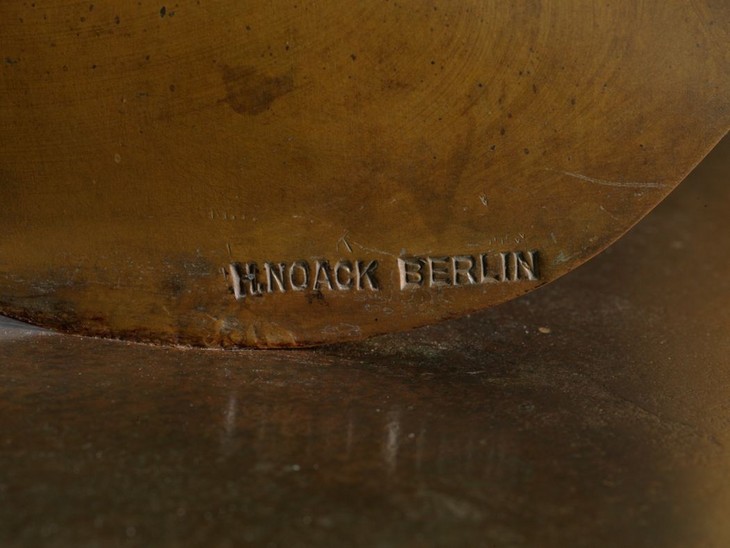
Detail of foundry stamp on base of Working Model for Three Way Piece No.1: Points 1964, cast 1964–9
Tate T02298
© The Henry Moore Foundation. All Rights Reserved
Fig.4
Detail of foundry stamp on base of Working Model for Three Way Piece No.1: Points 1964, cast 1964–9
Tate T02298
© The Henry Moore Foundation. All Rights Reserved
The smoothly cast, hollow bronze base is 50 mm deep and 7 mm thick. Vertical strip supports in its underside provide additional structural strength while traces of sand in its crevices indicate that the base was sand cast. The sculpture is attached to it by bolts at two of its three points. The third and finest of these points rests in a small recess with no fixings to hold it in place. The artist’s signature, ‘Moore’, is inscribed on the side of the base alongside the edition number ‘0/7’ (fig.3). The foundry mark ‘H.NOACK BERLIN’ is stamped on one of the sculpture’s lower edges where it meets the base (fig.4).
Lyndsey Morgan
March 2011
How to cite
Lyndsey Morgan, 'Technique and Condition', March 2011, in Alice Correia, ‘Working Model for Three Way Piece No.1: Points 1964, cast c.1964–9 by Henry Moore OM, CH’, catalogue entry, October 2013, in Henry Moore: Sculptural Process and Public Identity, Tate Research Publication, 2015, https://wwwEntry
Working Model for Three Way Piece No.1: Points is a bronze sculpture composed of irregular-shaped forms that display different features from different angles, encouraging consideration of the sculpture in the round. Curved bulbous forms merge into sharp-edged projections creating recessed areas and arches that convey a sense of dynamism and energy (fig.1). Standing on its base at three tapered points, the sculpture appears to be almost weightless, despite its bulky mass. Two of these points are rounded in shape, and are positioned side by side, separated by a shallow arch. The third point is much sharper and narrower in form and is located on the other side of the base, creating a large arched space underneath the central core of the sculpture.

Henry Moore
Working Model for Three Way Piece No.1: Points 1964, cast 1964–9
Tate T02298
© The Henry Moore Foundation. All Rights Reserved
Fig.1
Henry Moore
Working Model for Three Way Piece No.1: Points 1964, cast 1964–9
Tate T02298
© The Henry Moore Foundation. All Rights Reserved

Henry Moore
Working Model for Three Way Piece No.1: Points 1964, cast 1964–9
Tate T02298
© The Henry Moore Foundation. All Rights Reserved
Fig.2
Henry Moore
Working Model for Three Way Piece No.1: Points 1964, cast 1964–9
Tate T02298
© The Henry Moore Foundation. All Rights Reserved
One of the two rounded legs curves up smoothly towards an elliptical form defined by sharp edges that juts out prominently at an angle (fig.2). In contrast, the second of these legs rises up vertically towards a rounded ridge that extends down and outwards to create a thin, overhanging fin-like form. Behind this, a similar wedge-shaped protrusion emerges from the apex of the ridge, separated from the overhanging fin by a concave curve (fig.3). The third, sharper point on which the sculpture rests extends from a more distinct, highly polished curved form that loosely resembles the shape of a canine tooth. It is connected to the other side of the sculpture by a bridge of bronze that stretches over the central arch (fig.4).
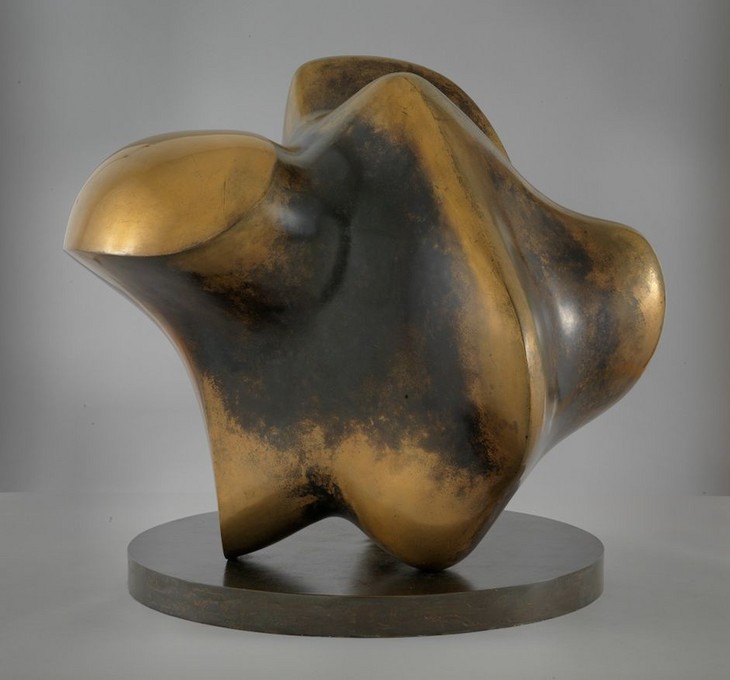
Henry Moore
Working Model for Three Way Piece No.1: Points 1964, cast 1964–9
Tate T02298
© The Henry Moore Foundation. All Rights Reserved
Fig.3
Henry Moore
Working Model for Three Way Piece No.1: Points 1964, cast 1964–9
Tate T02298
© The Henry Moore Foundation. All Rights Reserved
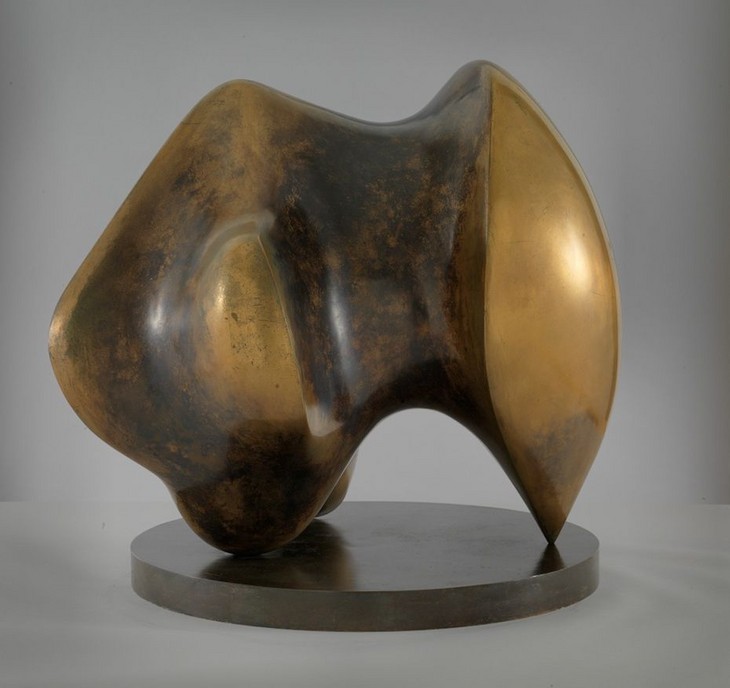
Henry Moore
Working Model for Three Way Piece No.1: Points 1964, cast 1964–9
Tate T02298
© The Henry Moore Foundation. All Rights Reserved
Fig.4
Henry Moore
Working Model for Three Way Piece No.1: Points 1964, cast 1964–9
Tate T02298
© The Henry Moore Foundation. All Rights Reserved
From plaster to bronze
Working Model for Three Way Piece No.1: Points originated from a small maquette that Moore made in 1964, probably in the small sculpture studio on the grounds of his home, Hoglands, in Perry Green, Hertfordshire (fig.5). By this time it was common for Moore to make small models such as this when developing his sculptural ideas, as opposed to drafting on paper.
In addition to serving as a private space in which to create his small models, the studio housed Moore’s ever growing collection of natural objects (fig.6). According to the filmmaker John Read, Moore liked to ‘shut himself away here, rummaging around, pondering and exploring’ his collection of bones, shells and flint stones, the shapes of which often served as starting points for Moore’s sculptures.1 In 1968 the critic and curator David Sylvester recorded that Maquette for Three Way Piece No.1 ‘was inspired by a pebble fragment with three points touching the ground’.2 In an interview with Sylvester in 1963 Moore explained his approach to working with such objects:
I look at them, handle them, see them from all round, and I may press them into clay and pour plaster into that clay and get a start as a bit of plaster, which is a reproduction of the object. And then add to it, change it. In that sort of way something turns out in the end that you could never have thought of the day before.3
It is likely that Moore developed the maquette for this sculpture in just this way, pressing stones into clay and taking plaster casts from the impressions left behind. Once it was dry, he could then modify the plaster by adding and subtracting forms and smoothening or sharpening edges. In 1978 Moore explained why he preferred working in plaster: ‘I use plaster for my maquettes in preference to clay because I can both build it up and cut it down. It is easily worked, while clay hardens and dries, so that it cannot be added to.’4 The maquette was cast in bronze in an edition of seven, and a version was also created in silver, although the date this sculpture was made has not been recorded.
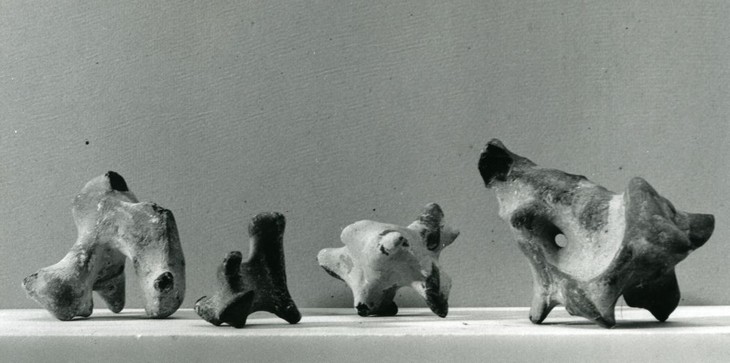
Flint stones in Henry Moore's studio
© The Henry Moore Foundation. All Rights Reserved© The Henry Moore Foundation. All Rights Reserved
Photo: Henry Moore Foundation Archive
Fig.6
Flint stones in Henry Moore's studio
© The Henry Moore Foundation. All Rights Reserved© The Henry Moore Foundation. All Rights Reserved
Photo: Henry Moore Foundation Archive

Wooden armature of Working Model for Three Way Piece No.1: Points in Moore's studio 1964
© The Henry Moore Foundation. All Rights Reserved
Fig.7
Wooden armature of Working Model for Three Way Piece No.1: Points in Moore's studio 1964
© The Henry Moore Foundation. All Rights Reserved
Once it was complete Moore would have used the plaster maquette as a template for Working Model for Three Way Piece No.1: Points. By systematically charting and measuring specific points on the surface of the maquette it was possible to enlarge the design while retaining its proportions. This scaling-up process was probably carried out in the White Studio at Hoglands by one of Moore’s assistants, who in 1964 were Geoffrey Greetham, Robert Holding, Derek Howarth, Roland Piché, Ron Robertson-Swann, Hylton Stockwell and Yeheskiel Yardini. After calculating the measurements of the enlarged sculpture, a wooden armature was made to the required size and shape (fig.7). Each rod was precisely measured so that its outward-facing end corresponded with a ‘landmark’ or specific point on the surface of the sculpture as measured from the maquette.5 Moore could allocate the bulk of the enlargement work to his assistants because, as curator Julie Summers has noted, it was ‘a scientific rather than artistic process’.6
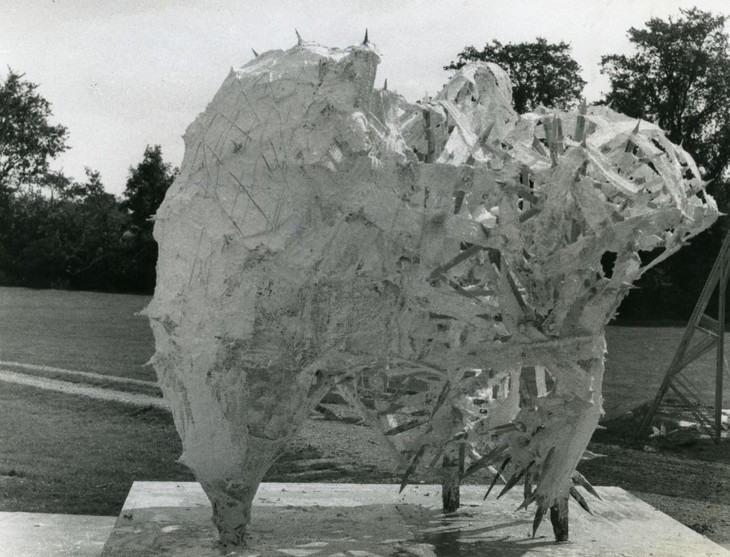
Armature of Working Model for Three Way Piece No.1: Points covered in scrim 1964
© The Henry Moore Foundation. All Rights Reserved
Fig.8
Armature of Working Model for Three Way Piece No.1: Points covered in scrim 1964
© The Henry Moore Foundation. All Rights Reserved

Plaster version of Working Model for Three Way Piece No.1: Points 1964
© The Henry Moore Foundation. All Rights Reserved
Fig.9
Plaster version of Working Model for Three Way Piece No.1: Points 1964
© The Henry Moore Foundation. All Rights Reserved
Once the wooden armature was constructed it was then draped in scrim, a bandage-like fabric (fig.8). Layers of plaster were then applied on top to achieve the final form. It was at this point that Moore began to work into the plaster surface, using an array of tools including chisels, files and sandpaper. These tools could be used to produce a variety of textures depending on the consistency of the plaster as it dried (fig.9), which were in turn reproduced in the cast bronze. In 1977 the curator Alan Bowness noted that ‘most of the post-war bronzes had rough, variegated textures, but from 1963 or so Moore began to introduce smooth and polished bronze surfaces’, as seen in this work.7

Detail of foundry stamp on base of Working Model for Three Way Piece No.1: Points 1964, cast 1964–9
Tate T02298
© The Henry Moore Foundation. All Rights Reserved
Fig.10
Detail of foundry stamp on base of Working Model for Three Way Piece No.1: Points 1964, cast 1964–9
Tate T02298
© The Henry Moore Foundation. All Rights Reserved
Moore’s sales log book, held in the Henry Moore Foundation Archive, records that the bronze edition of Working Model for Three Way Piece No.1: Points was cast at the Art Bronze Foundry, London, which was run by Charles Gaskin. However, the foundry mark stamped on the supporting leg of the sculpture reads ‘H.NOACK BERLIN’ (fig.10). Moore employed a number of different foundries during the 1960s and it is possible that the edition was cast in London and Berlin. This cast is marked ‘0/7’, indicating that it was the artist’s copy, and so may have been produced separately from the other seven. In 1967 Moore stated, ‘I use the Noack foundry for casting most of my work because in my opinion, Noack is the best bronze founder I know ... Also, the Noack foundry is reliable in all ways – in keeping to dates of delivery – and in sustaining the quality of their work’.8 According to the conservator Lyndsey Morgan the sculpture was probably made using the sand casting technique, but the finely polished surfaces obscure definitive evidence as to which method was used.9
After it was cast at the foundry a patina was applied to the surface of the sculpture. This was probably achieved by applying chemical solutions to the pre-heated bronze surface. The patina of Tate’s cast of Working Model for Three Way Piece No.1: Points is a dark brown colour, the mottled appearance of which has been achieved by stippling the patina solution onto the surface with a brush (fig.11). It has mainly been applied to the recessed surfaces between the projecting forms; the ‘high points’ of the sculpture, including the edges and various outward-facing surfaces display a lighter, golden brown tone where the patina has been used sparingly. The sculpture was also coated with a yellow-tinted lacquer, which lends the bronze its overall golden sheen.
In 1963 Moore asserted that he always patinated his bronze sculptures himself, although the physical labour involved meant that the process was often undertaken by his assistants.10 Noack is also known to have patinated some of Moore’s sculptures as the production of his casts increased during the 1960s and 1970s, but in these instances Moore would have instructed Noack carefully and was still able to adjust the patina himself at a later date if required.
Working Model for Three Way Piece No.1: Points served as an intermediate-sized model for a much larger version of the sculpture. The full-size Three Way Piece No.1: Points is almost two metres tall and was cast in an edition of three. These are currently held at Columbia University, New York (fig.12), Des Moines Art Center, Des Moines, and Fairmount Park, Philadelphia.11

Henry Moore
Working Model for Three Way Piece No.1: Points 1964, cast 1964–9
Tate T02298
© The Henry Moore Foundation. All Rights Reserved
Fig.11
Henry Moore
Working Model for Three Way Piece No.1: Points 1964, cast 1964–9
Tate T02298
© The Henry Moore Foundation. All Rights Reserved
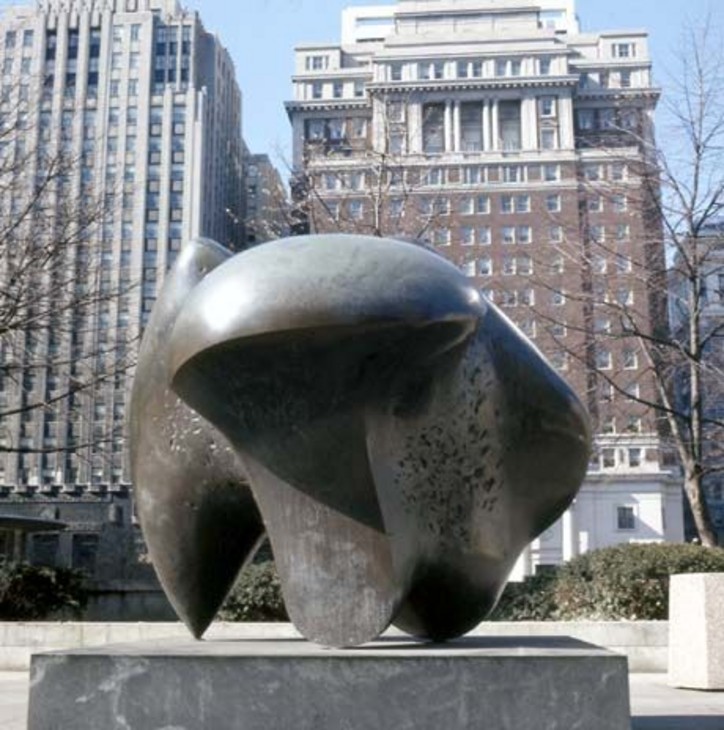
Henry Moore
Three Way Piece No.1: Points 1964–65
Bronze
Columbia University, New York
© The Henry Moore Foundation. All Rights Reserved
Fig.12
Henry Moore
Three Way Piece No.1: Points 1964–65
Columbia University, New York
© The Henry Moore Foundation. All Rights Reserved
Origins and interpretations
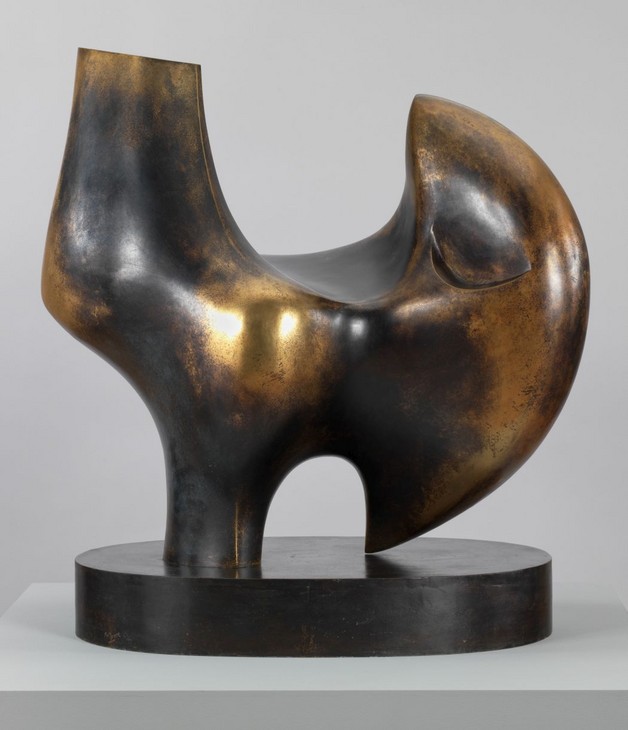
Henry Moore
Working Model for Three Way Piece No.2: Archer 1964, cast date unknown
Tate T02299
© The Henry Moore Foundation. All Rights Reserved
Fig.13
Henry Moore
Working Model for Three Way Piece No.2: Archer 1964, cast date unknown
Tate T02299
© The Henry Moore Foundation. All Rights Reserved
was an attempt to show one work from below as well as from on top and from the side. My idea was to make a new kind of sculpture, less dependent on gravity, which could be seen in at least three positions and be effective in all of them; a sculpture which you could understand more completely because you know it better. This worked in the maquette, but I made the finished bronze sculpture too large and heavy to be turned over by one person. We all make mistakes.13
Evidently, in developing his ideas for Three Way Piece No.1: Points Moore was particularly focused on how the sculpture would be experienced in the round, as Bowness recognised in the artist’s catalogue raisonné when he stressed its ‘remarkable three-dimensional variety’.14 That this formal concern became an organising principle of this work illustrates continuity between Moore’s experiments of the 1960s and his earlier ideas and aspirations for sculpture. In his statement for the 1934 publication Unit One he wrote:
Sculpture fully in the round has no two points of view alike. The desire for form completely realised is connected with asymmetry. For a symmetrical mass being the same from both sides cannot have more than half the number of different points of view possessed by a non-symmetrical mass.15
In his statement Moore also related his asymmetrical sculptures to naturally occurring forms, asserting that ‘asymmetry is connected also with the desire for the organic (which I have) rather than the geometric. Organic forms, though they may be symmetrical in their main disposition, in their reaction to environment, growth, and gravity, lose their perfect symmetry’.16 A work such as Recumbent Figure 1938 (Tate N05387) exemplifies Moore’s use of asymmetrical organic forms in the 1930s, and although many of his sculptures of the 1940s and the 1950s, such as Family Group 1949 (Tate N06004), did not share these formal characteristics, Moore’s conception of the organic remained embedded within his sculptural ethos and was expressed to varying degrees throughout his career.
The formal connections that can be made between Moore’s work of the 1930s and 1960s are what most likely prompted the curator David Sylvester to describe the bronzes of the 1960s as originating from ‘a biomorphic abstract sculptural language’.17 Coined in the 1930s by the critic Geoffrey Grigson, the term ‘biomorphic’ denoted, according to the art historian Jennifer Mundy, ‘an organic quality that was an indelible residue of the way in which the form had been arrived at’.18 While the term could infer a likeness to forms produced by organic processes, it ‘did not necessarily imply that the form looked like anything real’.19
‘Biomorphic’ is an adjective that, since Grigson first used it, has been used to describe surrealist works of the 1930s, such as Jean Arp’s Human Concretion 1935 (fig.14). Arp’s sculpture is made up of irregularly rounded shapes that the artist felt expressed a fluid balance of forces found in natural forms. The term ‘concretion’ was also used by Arp as a generic title for these sculptures and, for him, signified ‘the material process of condensation, hardening, coagulating, thickening, growing together ... Concretion designates solidification, the mass of the stone, the plant, the animal, the man. Concretion is something that has grown.’20 Adjectives such as thickening and growing, as well as stretching and pushing, could also be used in descriptions of Working Model for Three Way Piece No.1: Points. In 1937 examples of Moore’s and Arp’s work were reproduced alongside each other in the surrealist art journal Minotaure, and their sculptures have been discussed together frequently ever since.21 Sylvester’s use of the term ‘biomorphic’ in 1968 therefore suggests that Moore returned in the 1960s to the concerns that had preoccupied him earlier in his career. With this in mind, Working Model for Three Way Piece No.1: Points may not look like anything existing in the real world, but its protruding shapes and smooth surfaces perhaps share affinities with eroded pebbles and the sharp points of teeth.
However, Sylvester also identified a new feature of Moore’s work of the 1960s, one that is evident in Working Model for Three Way Piece No.1: Points. Sylvester highlighted ‘a new extreme concentration on tactile and motor rather than visual sensations – on what is experienced in running one’s hands over the body, responding more sharply to its hardness and softness, its hollows and bumps, than when looking at them’.22 For Sylvester, these simultaneously ‘hard and soft’ sculptures should primarily be understood through touch, which required a physical closeness to the work that prohibited a complete view of the sculpture. This kind of interaction with the sculpture facilitated a fragmentary and durational experience of the work in which its different elements are felt sequentially rather than seen holistically. Sylvester concluded that ‘in no other works has Moore taken such risks. And this reflects a further change of attitude – a growing acceptance, indeed, a positive courting, of imperfection, incompleteness’.23

Jean Arp (Hans Arp)
Human Concretion 1935
Plaster
495 x 476 x 647 mm
Museum of Modern Art, New York
© 2014 Artists Rights Society (ARS), New York / VG Bild-Kunst, Bonn
Fig.14
Jean Arp (Hans Arp)
Human Concretion 1935
Museum of Modern Art, New York
© 2014 Artists Rights Society (ARS), New York / VG Bild-Kunst, Bonn

Henry Moore
Upright Form: Knife Edge 1966
Portuguese Rosa Aurora marble
Tate T01172
© The Henry Moore Foundation. All Rights Reserved
Fig.15
Henry Moore
Upright Form: Knife Edge 1966
Tate T01172
© The Henry Moore Foundation. All Rights Reserved
In 1973 the critic John Russell accounted for the tactile sensibility of Moore’s work of the later 1960s with reference to the sculptor’s renewed engagement with stone carving. Having spent most of the 1940s and 1950s sculpting in plaster that was subsequently cast in bronze, in the mid-1960s Moore began to carve a number of sculptures in marble, such as Upright Form: Knife Edge 1966 (Tate T01172; fig.15). In 1965 Moore bought a home at Forte dei Marmi, Italy, close to the Carrara marble quarries, and henceforth spent two or three months each summer in Italy, where he spent his time relaxing but also carving. Russell suggested that Moore’s annual trips to Italy and his re-engagement with stone carving inevitably informed the work he made to be cast in bronze, stating, ‘I do not believe that it was coincidence that led him, from 1962 onwards, to concentrate more and more on surfaces that were smooth and unbroken and edges that were sharp and clean’.24 For Russell, many works of the mid-1960s ‘looked as if their basic forms had been decided with hammer and chisel’.25 The first of what may be classified as Moore’s late marble works, Two Forms (private collection), was made in 1964, the same year as Working Model for Three Way Piece No.1: Points. With its smooth faces and clean edges, the bronze could be regarded as a transitional work that anticipating the carved, flawless surfaces of his marble sculptures.
With the exception of large-scale commissions such as Nuclear Energy 1964–6, created for the University of Chicago, and Mirror Knife Edge 1977, for the National Gallery of Art in Washington, D.C., there is in general a paucity of critical analysis regarding Moore’s bronze sculptures from the mid-1960s onwards.26 In the early 1990s the critic Peter Fuller attributed this to a cultural shift that could accommodate neither the grand scale of Moore’s ambitions for his sculptures nor the methods that he used to fulfil them, claiming that ‘Moore’s monumental vision was widely held to be irrelevant in a world of obsolescence, consumer durables, admass and information processing, as was his continued use of traditional means and materials of the sculptor’.27 Rather than submit individual works to critical analysis, in the main critics have grouped these sculptures under the banner of an ill-defined ‘late bronze period’.28 Indeed, in his 1965 monograph on Moore the critic Herbert Read commented simply that the three-way sculptures Points and Archer ‘are bronzes of great precision and power’.29
Early exhibitions and reviews
A cast of Working Model for Three Way Piece No.1: Points was exhibited at the Rome and London premises of Moore’s commercial gallery, Marlborough Fine Art, in May and July 1965 respectively. Critical responses to these exhibitions were mixed. In a review of Moore’s show at Marlborough’s New London Gallery an unnamed critic writing for the Times observed that ‘the art of Mr Moore continues in its pace of unhurried majesty’.30 However, in a review for the Daily Telegraph Terence Mullaly identified Working Model for Three Way Piece No.1: Points as a ‘retrogressive step’ in Moore’s career.31 Similarly, the critic for the Guardian Norbert Lynton identified a qualitative decline in Moore’s recent output and suggested that ‘on the whole, Moore has been a victim of world-wide renown’.32 While Lynton acknowledged that the seeming accessibility of Moore’s sculpture had engaged a wide and unlikely portion of the public, he lamented Moore’s departure from direct wood and stone carving and his turn to bronze casting. For Lynton, ‘a world avid for work signed with a famous name, and less than discriminating where the individual work is concerned, has to be satisfied and is satisfied only too easily’.33 A few months later, in November 1965, Lynton reiterated this point, claiming that ‘Moore is one of a handful of outstanding sculptors our century has seen so far, but a lot of his recent work has been mediocre’.34
However, in an article published in the journal Art International in 1967 the critic Albert Elsen argued that the full-size Three Way Piece No.1: Points was one of Moore’s ‘best sculptures’.35 He proposed that this work, along with others such as Locking Piece 1963–4 (Tate T02293), Three Way Piece No.2: Archer 1964 (see Tate T02299) and Two Piece Sculpture No.7: Pipe 1966 (Tate T02300) belonged to a series of abstract works that demonstrated a new-found level of freedom in Moore’s sculpture. Elsen suggested, ‘late in his career Moore seems to have become more boldly and consistently inventive rather than interpretive, without withholding his natural generosity of spirit or the fullness of intellect and feeling with which his figural work has always been endowed’.36 Elsen claimed that by the late 1960s Moore’s reputation was such that he allowed himself to move beyond ‘his signature themes of the reclining figure or the mother and child’ and undertake a more considered and sustained engagement with abstraction than in his previous experiments of the 1930s. For Elsen, the strength of works such as Three Way Piece No.1: Points resided chiefly in the fact that they operated independently of an external referent and conveyed with relatively simple forms ‘an astonishing complexity and imaginative physiology when surveyed from all sides’.37 He asserted that for Moore, ‘these new [abstract] works evoke his excitement and satisfaction because they have, if anything, increased the challenge to his mind, eye and feelings. New demands have been made upon the viewer because these sculptures, compared to works before 1962, possess greater mystery and surprise’.38
The Henry Moore Gift
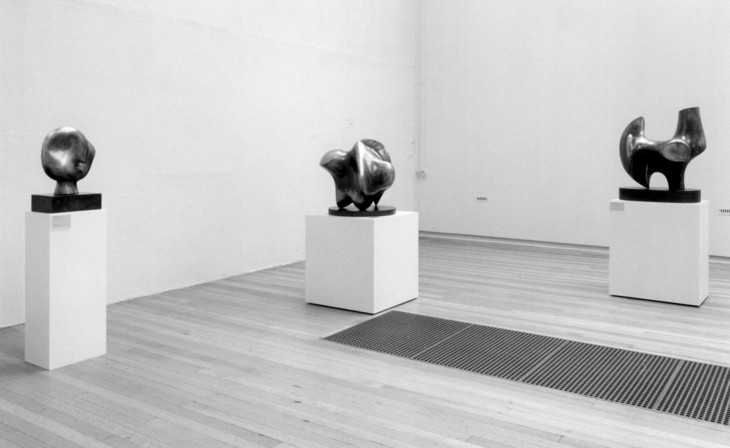
Installation photograph of The Henry Moore Gift, Tate Gallery 1978
Tate Archives
Photo © The Henry Moore Foundation. All Rights Reserved
Fig.16
Installation photograph of The Henry Moore Gift, Tate Gallery 1978
Tate Archives
Photo © The Henry Moore Foundation. All Rights Reserved
Following the exhibition the Tate Trustees decided to lend, on a long-term basis, those sculptures for which there were no immediate exhibition plans to select regional galleries and museums. Rather than keep large works in storage it was agreed, with the artist’s approval, that it would be advantageous – for Tate and for the recipient galleries – for the works to be dispersed across the country. Working Model for Three Way Piece No.1: Points was loaned to Leeds City Art Gallery from May 1979 until June 1993.
Other casts of Working Model for Three Way Piece No.1: Points are held in the collections of the Atkinson Art Gallery, Southport, the Norton Simon Foundation, Pasadena, and the National Library of Canada, Ottawa.42 Other casts are believed to be held in private collections.
Alice Correia
October 2013
Notes
John Read in Henry Moore: One Yorkshireman Looks at His World, dir. by John Read, television programme, broadcast BBC2, 11 November 1967, http://www.bbc.co.uk/archive/henrymoore/8807.shtml , accessed 3 November 2013.
Henry Moore in ‘Henry Moore talking to David Sylvester’, 7 June 1963, transcript of Third Programme, BBC Radio, broadcast 14 July 1963, p.18, Tate Archive TGA 200816. (An edited version of this interview was published in the Listener, 29 August 1963, pp.305–7.)
See Richard Wentworth, ‘The Going Concern: Working for Moore’, Burlington Magazine, vol.130, no.1029, December 1988, p.928. For a discussion of Moore’s enlargement methods see Anne Wagner, ‘Scale in Sculpture: The Sixties and Henry Moore’, Tate Papers, no.15, Spring 2011, http://www.tate.org.uk/research/publications/tate-papers/scale-sculpture-sixties-and-henry-moore , accessed 13 August 2013.
Julie Summers, ‘Fragment of Maquette for King and Queen’, in Claude Allemand-Cosneau, Manfred Fath and David Mitchinson (eds.), Henry Moore From the Inside Out: Plasters, Carvings and Drawings, Munich 1996, p.126.
See ‘Three Way Piece Number 1: Points’, Museum Without Walls: AUDIO, https://www.youtube.com/watch?v=5Rv7VVHP2kE , accessed 3 October 2013.
Henry Moore, ‘Statement for Unit One’, in Herbert Read (ed.), Unit One: The Modern Movement in English Architecture, Painting and Sculpture, London 1934, pp.29–30, reprinted in Alan Wilkinson (ed.), Henry Moore: Writings and Conversations, Aldershot 2002, p.191.
Jennifer Mundy, ‘Comment on England’, in Chris Stephens (ed.), Henry Moore, exhibition catalogue, Tate Britain, London 2010, p.28.
See John Russell, Henry Moore, 1968, revised edn, London 1973, p.74; and Michel Remy, Surrealism in Britain, Aldershot 1999, p.70.
For example, with the exception of two essays on Atom Piece, none of the chapters in the book Henry Moore: Critical Essays address the late work. See Jane Beckett and Fiona Russell (eds.), Henry Moore: Critical Essays, Aldershot 2003.
Terence Mullaly, ‘Magicians of Art Can Still Cause Surprise’, Daily Telegraph, 16 July 1965, Henry Moore Foundation Archive.
Albert Elsen, ‘The New Freedom of Henry Moore’, Art International, vol.11, no.7, September 1967, p.42.
These figures are based on those listed in a memo in the exhibition’s records. See Tate Public Records TG 92/344/2.
Related essays
- Henry Moore and the Values of Business Alex J. Taylor
- Scale at Any Size: Henry Moore and Scaling Up Rachel Wells
- Henry Moore: The Plasters Anita Feldman
- Henry Moore's Approach to Bronze Lyndsey Morgan and Rozemarijn van der Molen
Related catalogue entries
Related material
-
Photograph
How to cite
Alice Correia, ‘Working Model for Three Way Piece No.1: Points 1964, cast c.1964–9 by Henry Moore OM, CH’, catalogue entry, October 2013, in Henry Moore: Sculptural Process and Public Identity, Tate Research Publication, 2015, https://www

